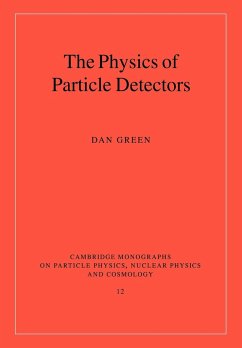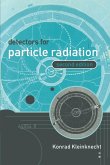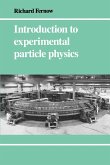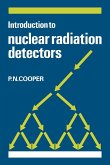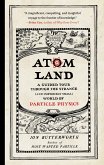Comprehensive introduction to the physical principles and design of particle detectors, covering all major detector types in use today.
This text provides a comprehensive introduction to the physical principles and design of particle detectors, covering all major detector types in use today. The book begins with a reprise of the size and energy scales involved in different physical processes. It then considers non-destructive methods, including the photoelectric effect, photomultipliers, scintillators, Cerenkov and transition radiation, scattering and ionisation and the use of magnetic fields in drift and wire chambers. A complete chapter is devoted to silicon detectors. In the final part of the book, the author discusses destructive measurement techniques including Thompson and Compton scattering, Bremsstrahlung and calorimetry. Throughout the book, emphasis is placed on explaining the physical principles on which detection is based, and showing, by considering appropriate examples, how those principles are best utilised in real detectors. This approach also reveals the limitations that are intrinsic to different devices. Exercises and detailed further reading lists are included.
Table of content:
Part I. Introduction: 1. Size, energy, cross section; Part II. Non-Destructive Measurements: Part II. A. Time and Velocity: 2. The photoelectric effect, photomultipliers, scintillators; 3. Cerenkov radiation; 4. Transition radiation; Part II. B. Scattering and Ionization: 5. Elastic EM scattering; 6. Ionization; Part II. C. Position and Momentum: 7. Magnetic fields; 8. Drift and diffusion in materials, wire chambers; 9. SI detectors; Part III. Destructive Measurements: Part III. A. Radiation: 10. Radiation and photon scattering; Part III. B. Energy Measurements: 11. EM Calorimetry; 12. Hadronic calorimetry; Part IV. The Complete Set of Measurements: 13. Summary; Appendices.
This text provides a comprehensive introduction to the physical principles and design of particle detectors, covering all major detector types in use today. The book begins with a reprise of the size and energy scales involved in different physical processes. It then considers non-destructive methods, including the photoelectric effect, photomultipliers, scintillators, Cerenkov and transition radiation, scattering and ionisation and the use of magnetic fields in drift and wire chambers. A complete chapter is devoted to silicon detectors. In the final part of the book, the author discusses destructive measurement techniques including Thompson and Compton scattering, Bremsstrahlung and calorimetry. Throughout the book, emphasis is placed on explaining the physical principles on which detection is based, and showing, by considering appropriate examples, how those principles are best utilised in real detectors. This approach also reveals the limitations that are intrinsic to different devices. Exercises and detailed further reading lists are included.
Table of content:
Part I. Introduction: 1. Size, energy, cross section; Part II. Non-Destructive Measurements: Part II. A. Time and Velocity: 2. The photoelectric effect, photomultipliers, scintillators; 3. Cerenkov radiation; 4. Transition radiation; Part II. B. Scattering and Ionization: 5. Elastic EM scattering; 6. Ionization; Part II. C. Position and Momentum: 7. Magnetic fields; 8. Drift and diffusion in materials, wire chambers; 9. SI detectors; Part III. Destructive Measurements: Part III. A. Radiation: 10. Radiation and photon scattering; Part III. B. Energy Measurements: 11. EM Calorimetry; 12. Hadronic calorimetry; Part IV. The Complete Set of Measurements: 13. Summary; Appendices.

